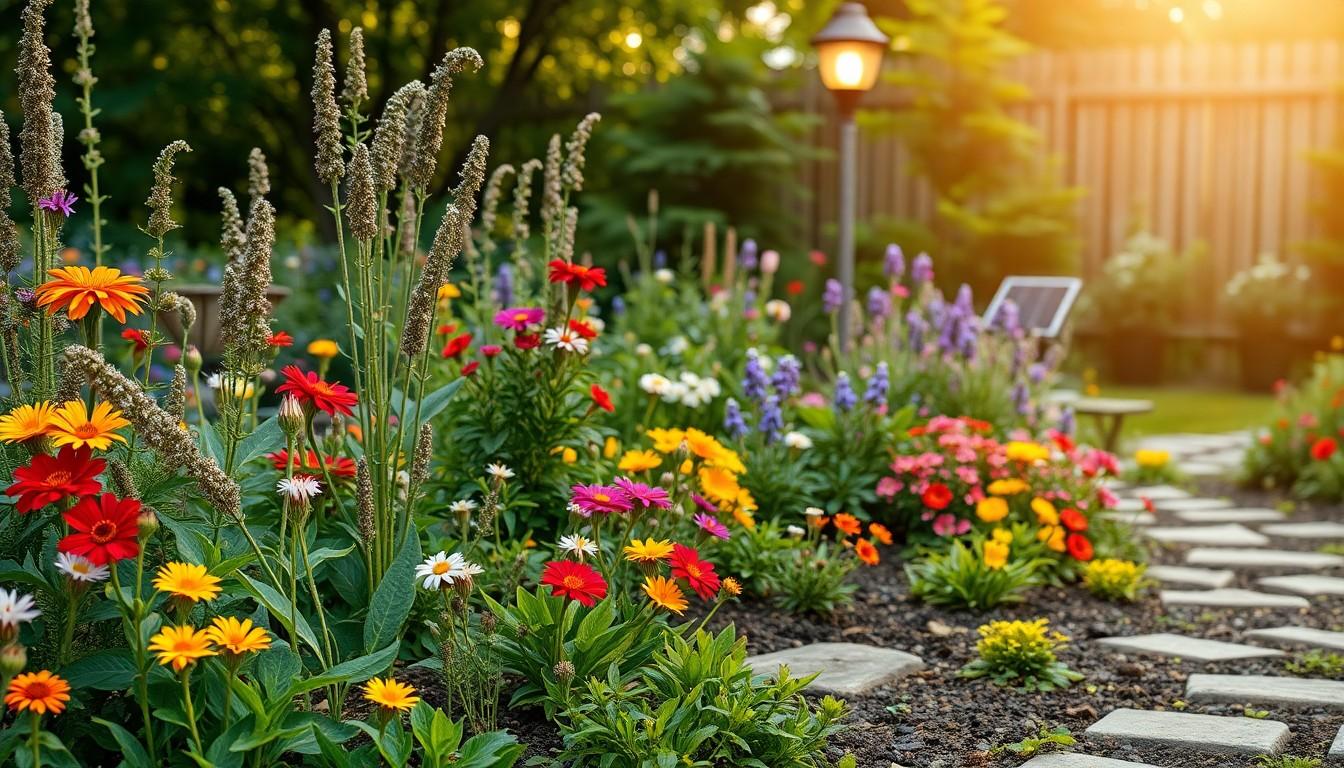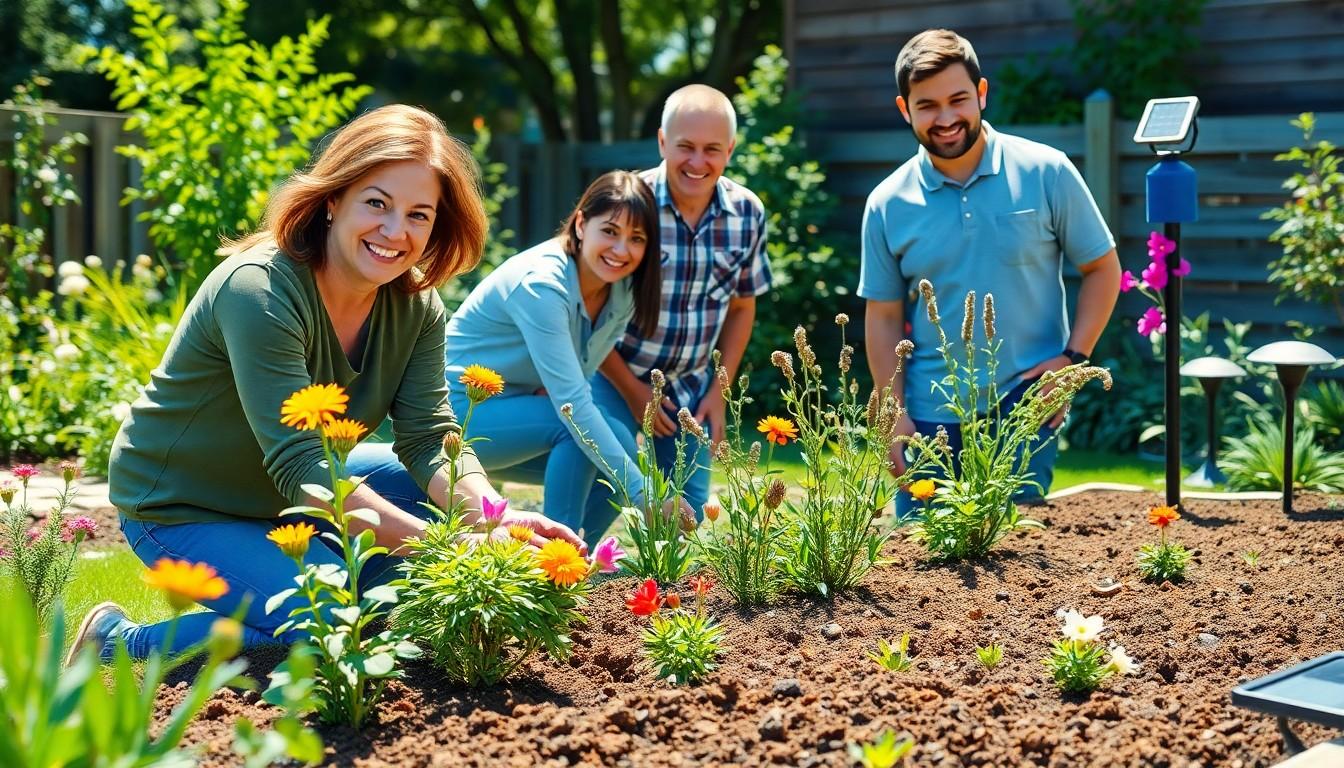In a world where lawns can seem more like chemical battlegrounds than serene retreats, green tree eco-friendly landscaping is the superhero we didn’t know we needed. Imagine transforming your yard into a lush paradise that not only looks stunning but also gives Mother Nature a high-five. With eco-friendly practices, homeowners can cultivate beauty while reducing their carbon footprint—talk about a win-win!
Green Tree Eco Friendly Landscaping
Green tree eco-friendly landscaping focuses on sustainable practices, enhancing both environmental health and aesthetic appeal. This approach prioritizes native plants that thrive in local climates, reducing water usage and maintenance. Homeowners find it beneficial to select drought-resistant species, minimizing reliance on irrigation systems.
Incorporating organic materials in garden beds also shows positive effects. Compost enriches soil quality while reducing waste. Mulching protects plants and retains moisture, contributing to healthier ecosystems.
Creating wildlife habitats is an important aspect of eco-friendly landscaping. By installing birdhouses and pollinator gardens, individuals attract beneficial species, supporting local biodiversity. The use of non-toxic pest control methods fosters a safer environment for both plants and wildlife.
Many homeowners incorporate hardscaping elements to enhance their outdoor spaces. Utilizing permeable pavers allows for better water drainage, reducing runoff and erosion. Incorporating rain gardens can also manage stormwater, benefiting surrounding landscapes.
Implementing energy-efficient lighting highlights the beauty of eco-friendly yards at night. By choosing solar lights, individuals reduce energy consumption while enhancing safety.
Green tree eco-friendly landscaping harmonizes outdoor beauty with nature’s needs. Through smart choices in plant selection, materials, and design, homeowners create spaces that are not only visually appealing but also environmentally responsible. Sustainable landscapes benefit the earth, allowing homeowners to enjoy their outdoor spaces while positively impacting the environment.
Benefits of Eco Friendly Landscaping

Eco-friendly landscaping offers multiple advantages that greatly benefit both homeowners and the environment. Implementing sustainable practices in landscaping enhances natural beauty while promoting ecological health.
Environmental Impact
Eco-friendly landscaping significantly reduces pollution by eliminating toxic chemicals common in traditional lawn care. This approach fosters biodiversity by creating habitats for local wildlife, such as birds and beneficial insects. By selecting native plants, homeowners conserve water and support local ecosystems, as these plants thrive in their natural environment. Utilizing organic materials, like compost, improves soil structure and promotes healthy plant growth. Sustainable practices like rain gardens capture and filter stormwater, preventing runoff and improving water quality. Overall, eco-friendly landscaping actively contributes to environmental preservation and promotes a balanced ecosystem.
Economic Advantage
Choosing eco-friendly landscaping leads to cost savings in various ways. Reduced water usage through drought-resistant plant selections lowers water bills. Native plants also require less maintenance, minimizing expenses for labor or landscaping services. Organic materials like compost provide a cost-effective way to enrich soil quality, promoting healthy plant growth without the expense of synthetic fertilizers. Additionally, energy-efficient lighting, such as solar-powered lights, decreases electricity costs. Investing in eco-friendly landscaping not only enhances property value but also demonstrates long-term financial benefits that outweigh initial costs.
Design Principles of Green Tree Landscaping
Green Tree Landscaping emphasizes sustainable design practices that enhance both beauty and environmental health. Strong principles guide this eco-friendly approach.
Native Plants
Native plants thrive in local climates, requiring less water and maintenance. Their resilience fosters a balanced ecosystem, attracting pollinators like bees and butterflies. A diverse array of native species creates vibrant landscapes while supporting local wildlife. For example, choosing local wildflowers or shrubs boosts regional biodiversity. Implementing these plants minimizes the need for chemical fertilizers and pesticides, contributing to cleaner environments. Homeowners experience lower water bills and healthier ecosystems through careful native plant selection.
Sustainable Materials
Sustainable materials form the backbone of eco-friendly landscaping. Organic compost enriches soil, fostering plant growth without synthetic additives. Recycled materials like bricks and stone add aesthetic value while reducing waste in landfills. Incorporating permeable paving allows for better water drainage, alleviating stormwater management issues. Additionally, using responsibly sourced wood for landscaping structures supports sustainable forestry practices. Opting for energy-efficient fixtures, such as solar garden lights, significantly reduces energy consumption while enhancing outdoor areas. Selecting sustainable materials ensures a beautiful yet responsible landscape.
Maintenance Practices
Eco-friendly landscaping demands ongoing care that aligns with sustainable principles. Implementing effective maintenance practices enhances environmental health while reducing overall effort and resources.
Water Conservation Techniques
Irrigation systems should utilize drip techniques or soaker hoses to minimize water loss. Collecting rainwater in barrels for garden use also promotes resource efficiency. Mulching around plants retains moisture, lowering the need for frequent watering. Scheduling watering during early mornings or late afternoons reduces evaporation. Native plants, adapted to local climates, require less water, making them an ideal choice for conservation efforts.
Organic Pest Control
Encouraging beneficial insects like ladybugs and lacewings naturally minimizes pest populations. Planting companion plants helps deter pests without harmful chemicals. Neem oil acts as an effective organic pesticide when applied properly. Regularly inspecting plants for signs of pests ensures prompt action can be taken against infestations. Using barriers, such as row covers, protects plants from harm while allowing light and moisture to reach them.
Case Studies of Successful Implementations
Green Tree Eco Friendly Landscaping has seen transformative projects across various locations, illustrating the viability of sustainable landscaping practices. One notable case involved a residential community in California that replaced traditional turf lawns with native plants. This initiative significantly reduced water usage by 60% while enhancing local biodiversity.
Another successful implementation took place in an urban park in Texas. The park integrated rain gardens and permeable pavers, which improved stormwater management. Data indicated a 30% decrease in surface runoff, thus decreasing the potential for flooding in nearby areas.
A commercial property in Florida showcased the economic benefits of eco-friendly landscaping. By using drought-resistant plants and organic mulch, maintenance costs dropped by 40%. Additionally, energy-efficient solar lighting reduced electric bills by 20%.
In a neighborhood in Colorado, homeowners collaborated to create small wildlife habitats. These habitats attracted a diverse range of pollinators, positively impacting local ecosystems. Reports showed increased pollinator activity, which improved flower and plant health in the area.
A university campus in New York adopted sustainable practices by installing green roofs. These roofs not only provided insulation but also captured rainwater for irrigation. Studies indicated a 25% decrease in energy consumption across the campus buildings.
Overall, these case studies illustrate the adaptability and effectiveness of eco-friendly landscaping. Each project demonstrates how sustainable practices enhance environmental health while delivering economic advantages to communities and property owners alike.
Foster a Healthier Environment
Embracing Green Tree Eco Friendly Landscaping transforms outdoor spaces into sustainable havens. By prioritizing native and drought-resistant plants homeowners can create vibrant landscapes that conserve water and support local wildlife. The integration of organic materials and efficient design elements enhances soil health and manages stormwater effectively.
This approach not only beautifies properties but also fosters a healthier environment. With long-term economic benefits such as reduced maintenance costs and lower energy bills eco-friendly landscaping proves to be a wise investment. Ultimately it harmonizes the desire for aesthetic appeal with the crucial need for ecological responsibility. Choosing sustainable landscaping practices is a step toward a greener future that benefits both individuals and the planet.

